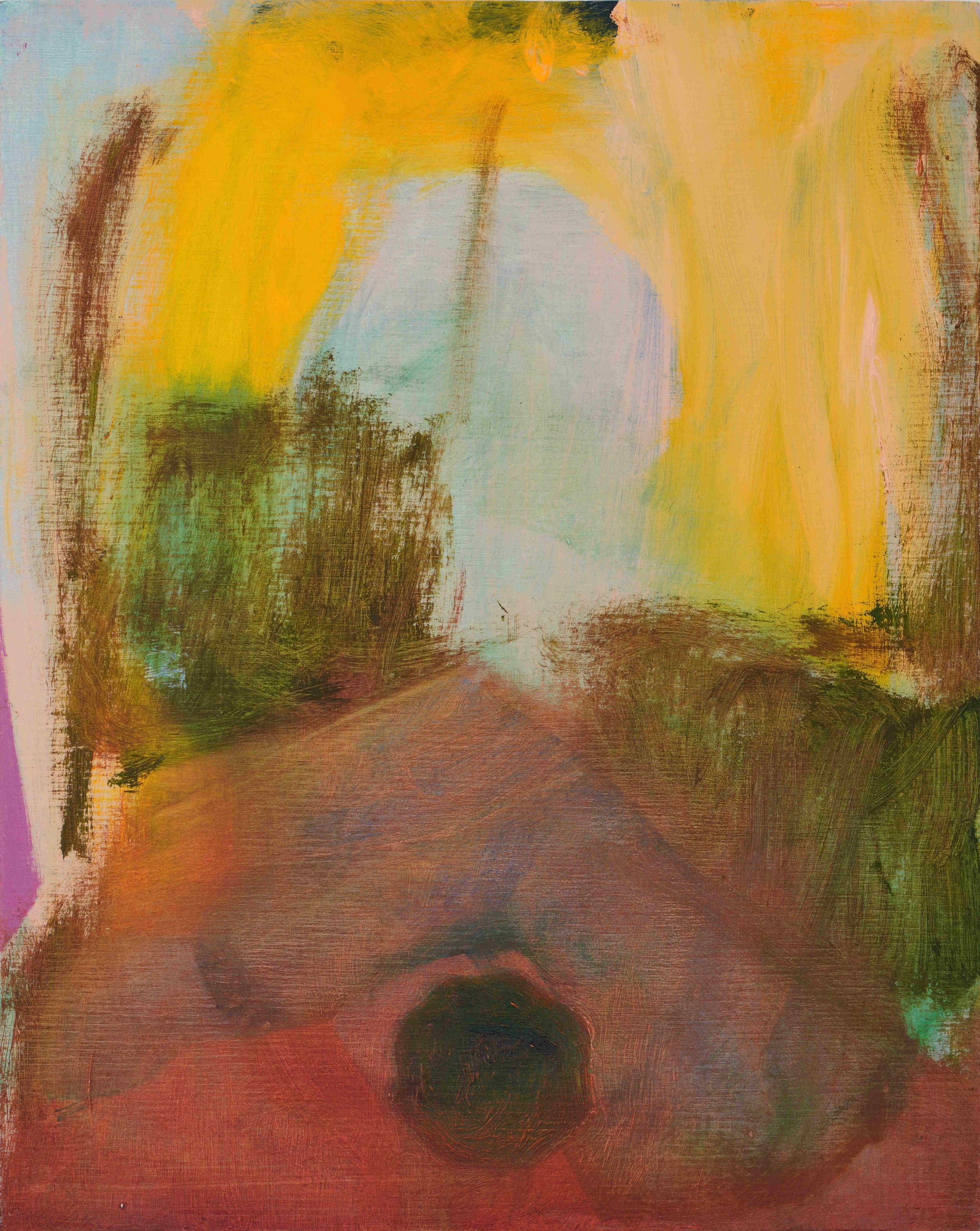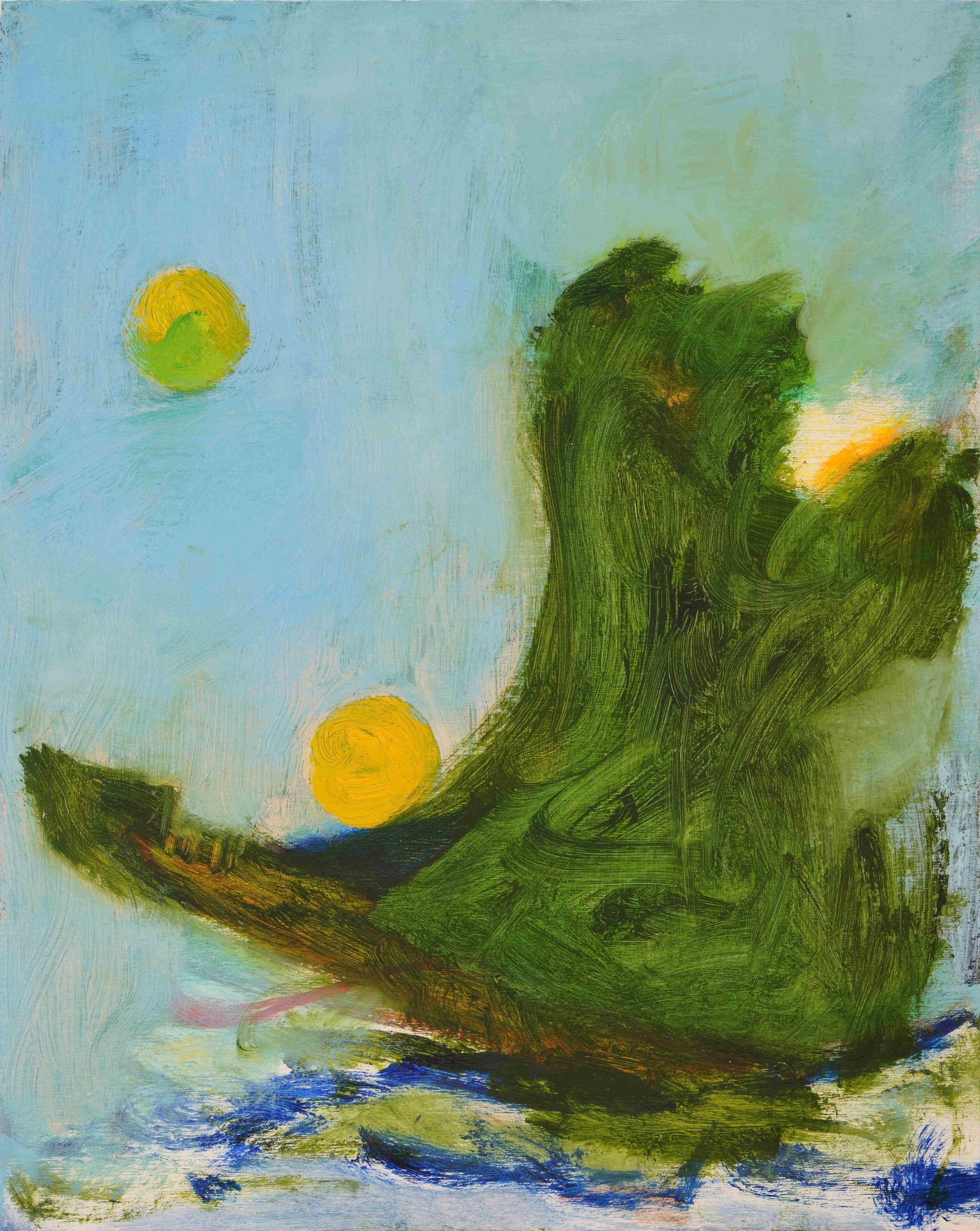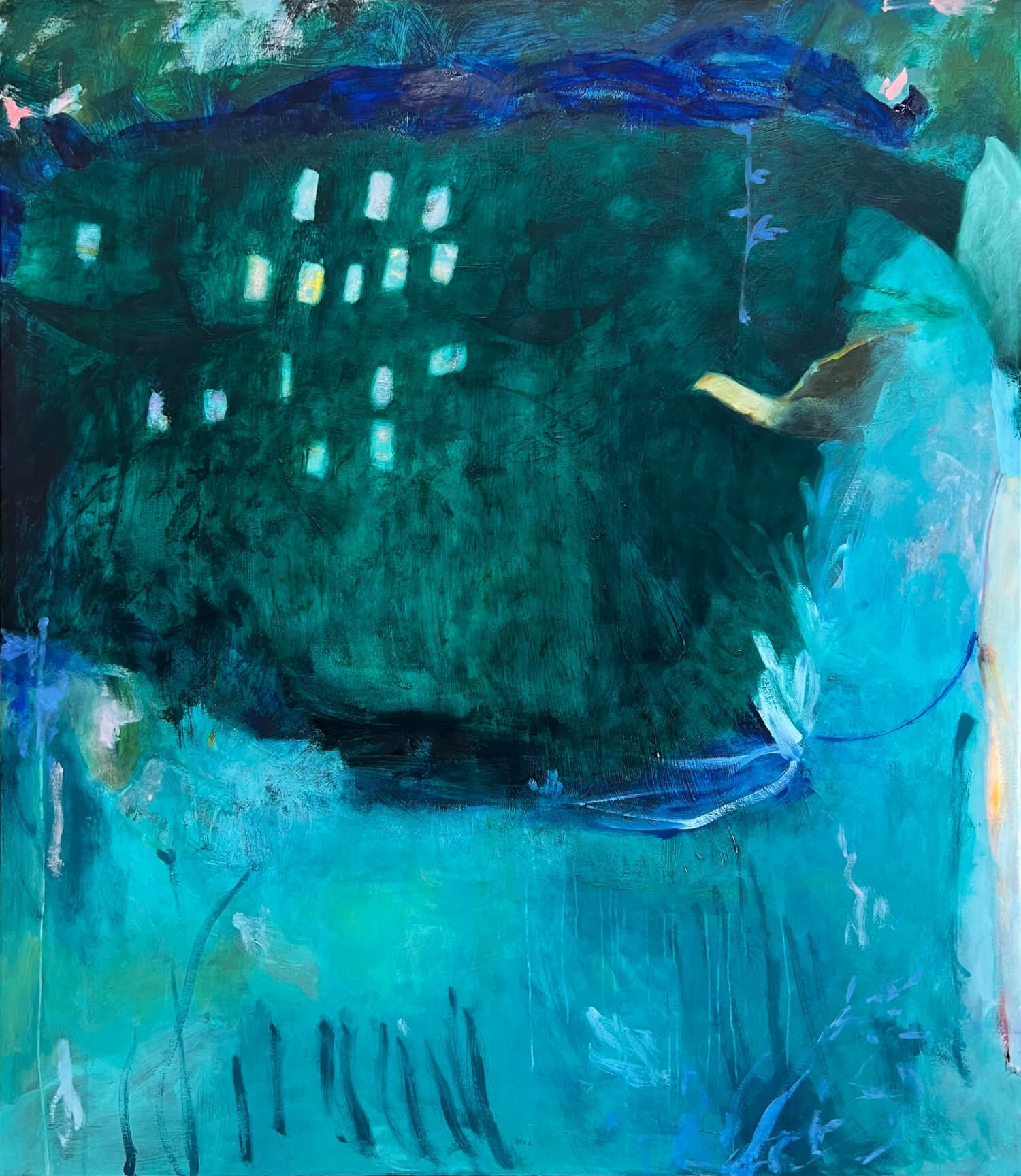Xinran Guan
Xinran Guan was born in Beijing, China, and now lives and works in Brooklyn, New York. She received her BA from Bard College and her BS from Columbia University in 2016, followed by her MFA from the LeRoy E. Hoffberger School of Art at the Maryland Institute College of Art in 2019. Xinran is a painter who works primarily with oil on canvas, constructing a collection of imaginary and mythical landscapes that feature a wide range of imagery and abstraction. She applies organic forms and vivid colors to create rhythmic movements that weave into intricate images.
Artist Statement
I’ve always been scared of darkness. Nevertheless, I love gazing through my window at night. The darkness is both daunting and thrilling, as it hides what I see every day and transforms it into an ineffable world of silhouettes. This mystical shroud conceals the world's intricacies, blurring the line between dreams and wakefulness. It acts as a gateway to an alternate reality, where fantasy and mythology converge, unveiling the universe's hidden secrets and true history.
I’ve always been intrigued by questions like, “Where did I come from?” and “Where am I headed?” Is the world really how we see it, or are we confined like Plato's cave dwellers? These inquiries guide me as I embark on a spiritual quest, seeking a connection to the cosmos. The world, veiled by darkness, snow, and fog, shrouds the Earth, forming a celestial canvas that beckons my mind to transcend time and space. In this boundless reality, I feel linked to the cosmos on a profound level. It's as if nature whispers that a hint of obscurity is necessary to see better.
I see my paintings as an array of countless dreams that connect me to the subconscious—dreams forged from my memories, emotions, past traumas, and a ceaseless fascination with the cosmos. For each painting, I intricately lay down sketches as seeds, followed by layers of paint and wash to either mask or unveil them. It's within the interplay of masking and unveiling that the intangible eventually surfaces between the tangible and the formless. As the intangible emerges through this process, my myriad experiences coalesce into a singular, amalgamated dream. It’s a dream that weaves its own myth and origin, and it’s also my best wish to the world.
www.xinranguan.com
How has the environment you grew up in affected your art practice?
Growing up in China, immersed in the depths of its artistic traditions and influenced by the profound philosophies of Taoism, my art practice has been deeply shaped by the rich tapestry of my cultural environment. Reflecting the restrained elegance of Chinese aesthetics, my paintings capture the grace of calligraphic brushwork, depicting layers of tones and flowing lines.
If your artwork was a mirror, what would it reflect?
If my artwork is a mirror, it becomes a reflective surface upon which each observer can project their own narrative and interpretation. While my art is crafted with my own narrative, memory, and understanding of the relationship between oneself and the world, its purpose is to invite viewers to engage with it on a deeply personal level.
My artworks are like vessels through which individuals can explore and express their own stories, emotions, and perspectives. By leaving space for interpretation and projection, viewers are invited to find resonance with their own lived experiences, memories, and beliefs within the imagery and themes I present.
What is the most difficult part (or your least favorite part) of your process?
Working on a painting is like having a conversation with it; there is a dynamic exchange of ideas, emotions, and intentions between myself and the artwork. Each brushstroke, color choice, and compositional decision becomes a part of this dialogue, shaping the direction and outcome of the painting. Like any conversation, there may be moments of frustration and uncertainty along the way. The creative process often involves grappling with challenges, making difficult decisions, and navigating unexpected obstacles. However, these moments of frustration are not only inevitable but also integral to the journey of creation.
Pursuing ‘artist’ as a career is not for the faint of heart. What is the most rewarding aspect of this pursuit?
The moment when I decide a work is finished is definitely a very rewarding aspect.
If your art is in a lineage of artists working within similar veins, who would be part of your lineage and why?
I have great admiration for many artists from diverse artistic traditions and approaches, such as Cy Twombly, Joan Mitchell, Joan Miró, and Chinese painters like Zhu Da, to name a few. Although they come from diverse cultural backgrounds and artistic traditions, their bold, expressive brushwork and vibrant colors, along with a poetic and playful approach, share the value of capturing the essence of the subject. By drawing inspiration from this diverse range of artists, I aim to continue the lineage of those who explore the boundaries of artistic expression, blending cultural influences and personal narratives to create artwork that resonates deeply with viewers.







